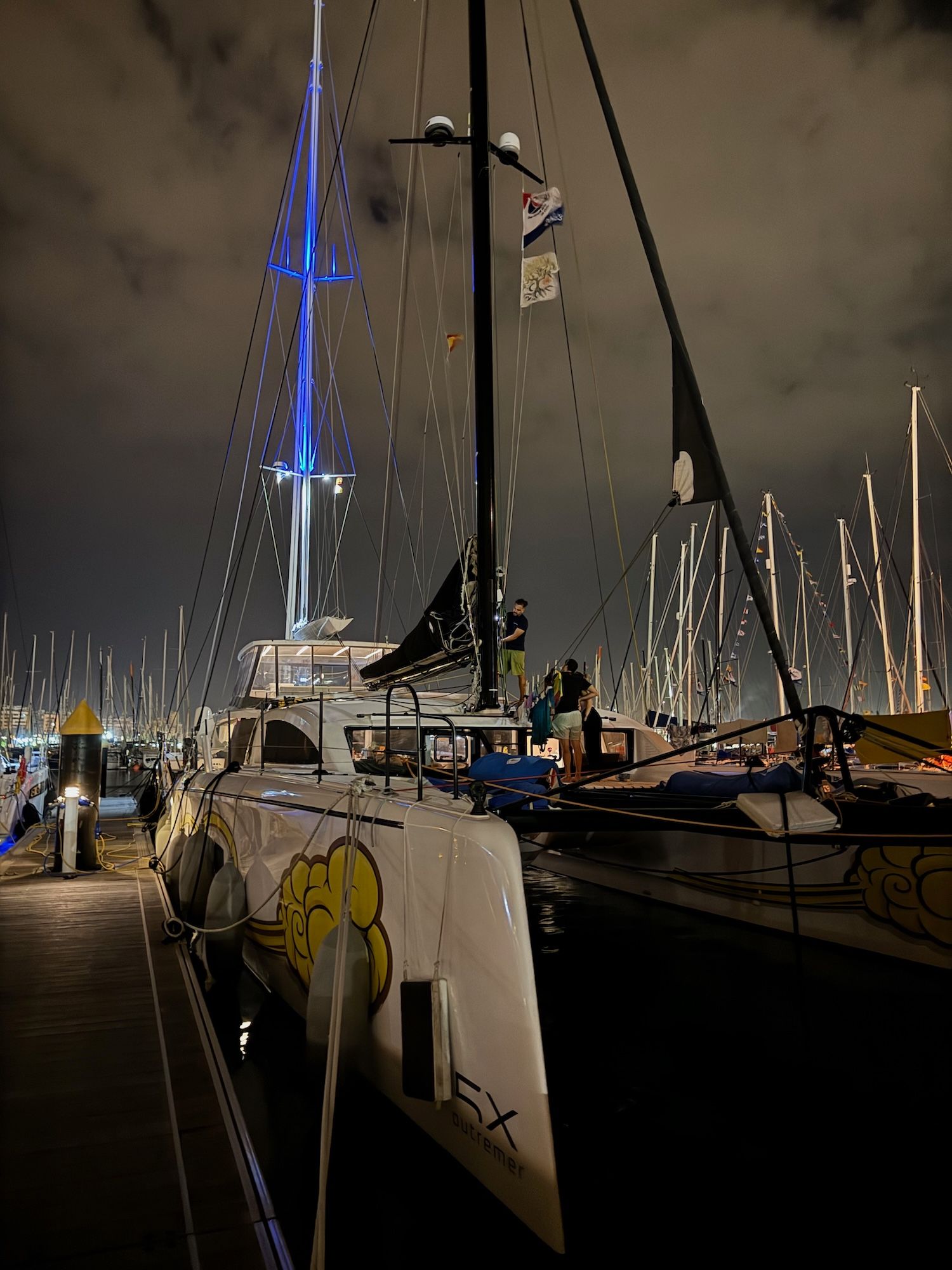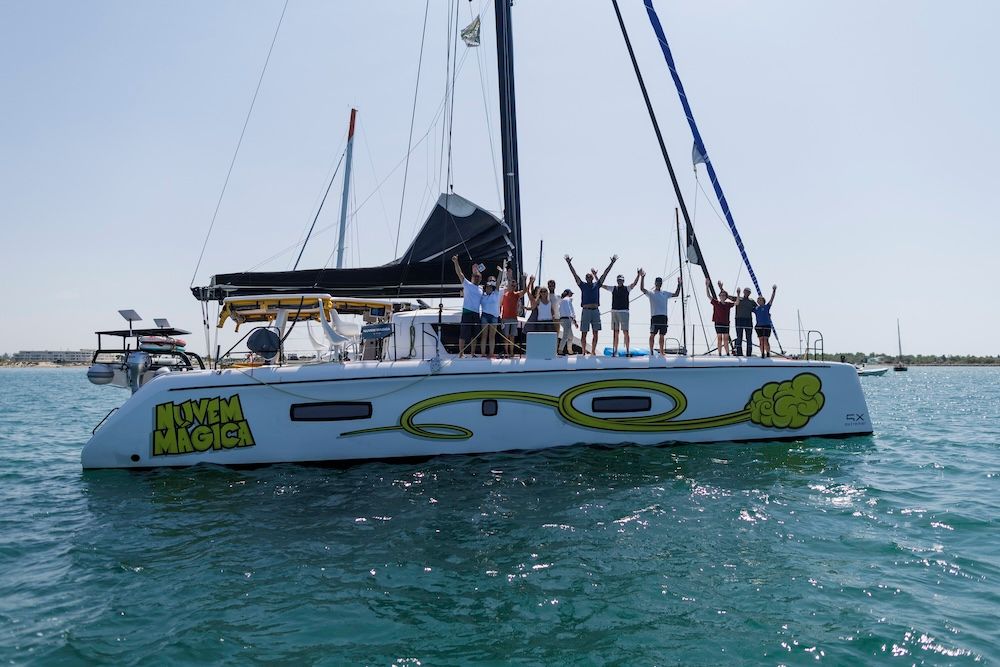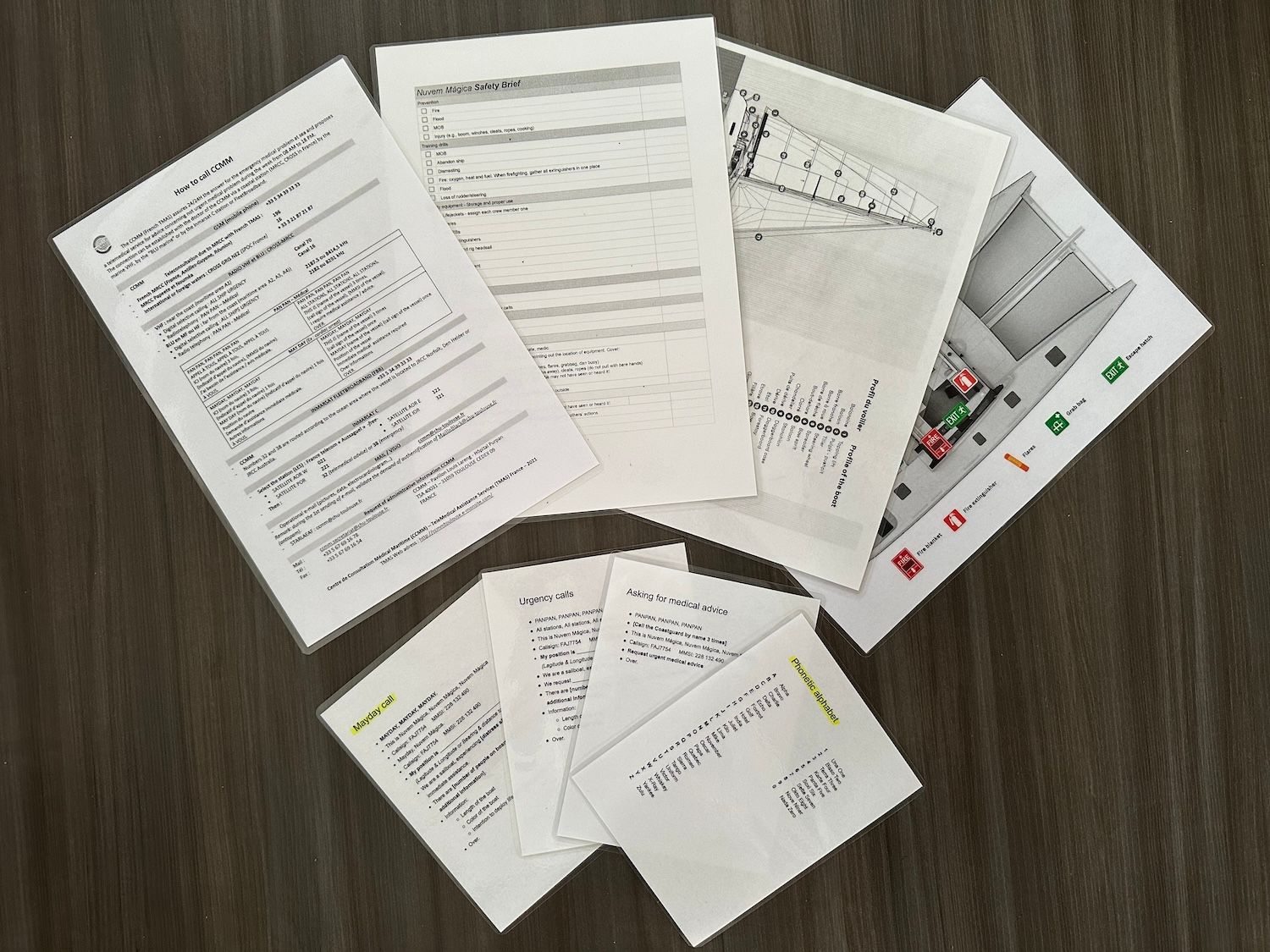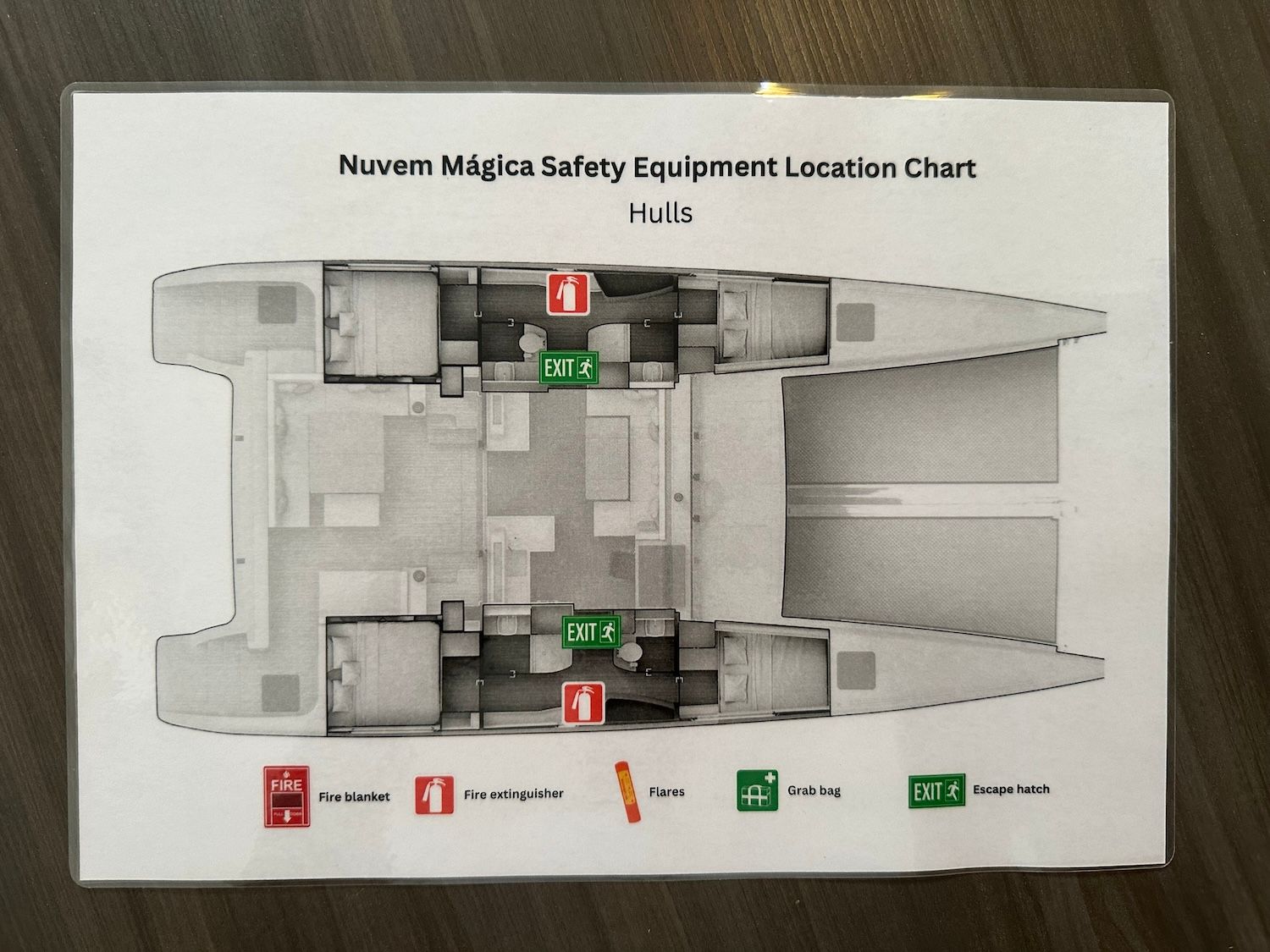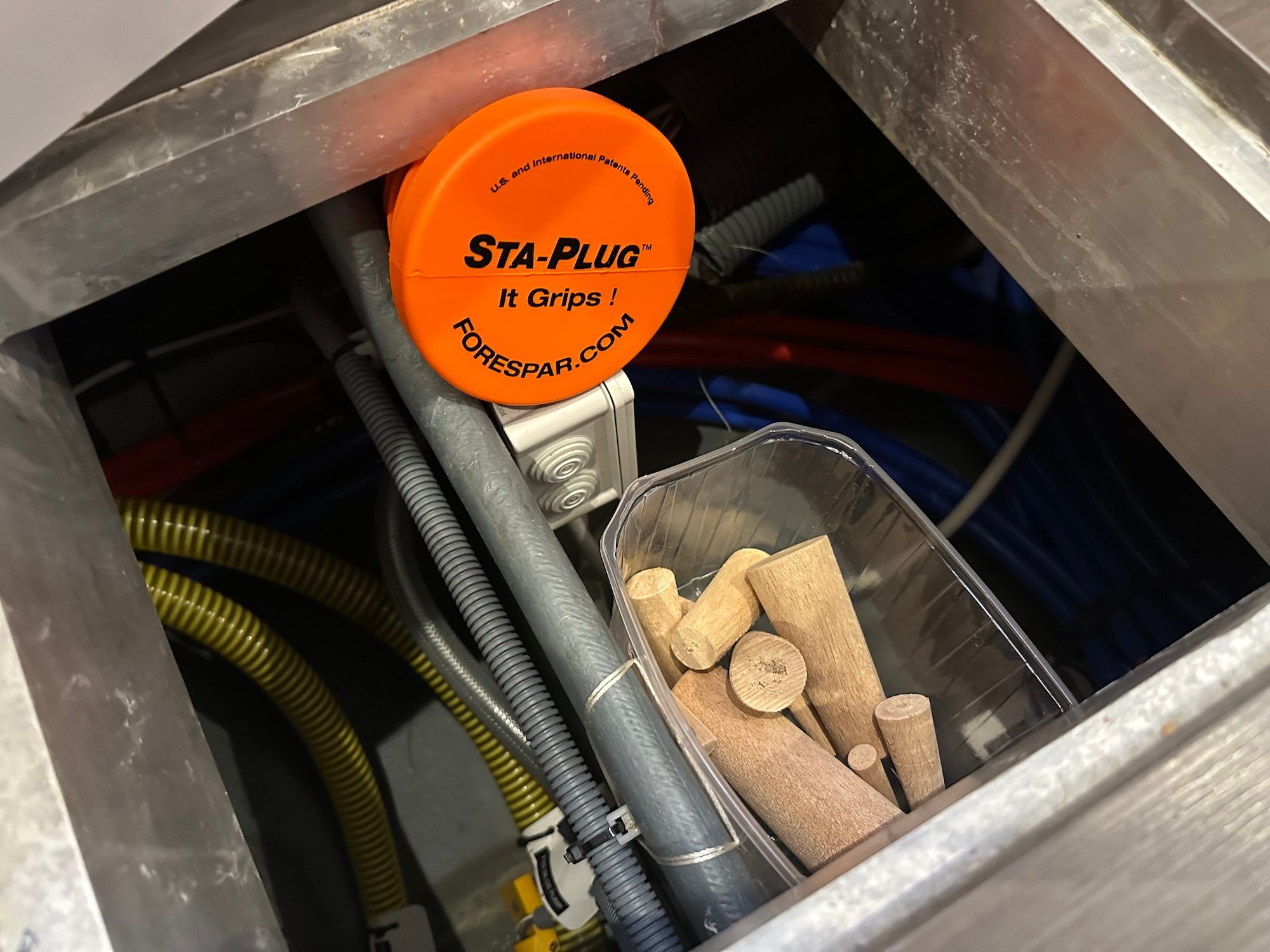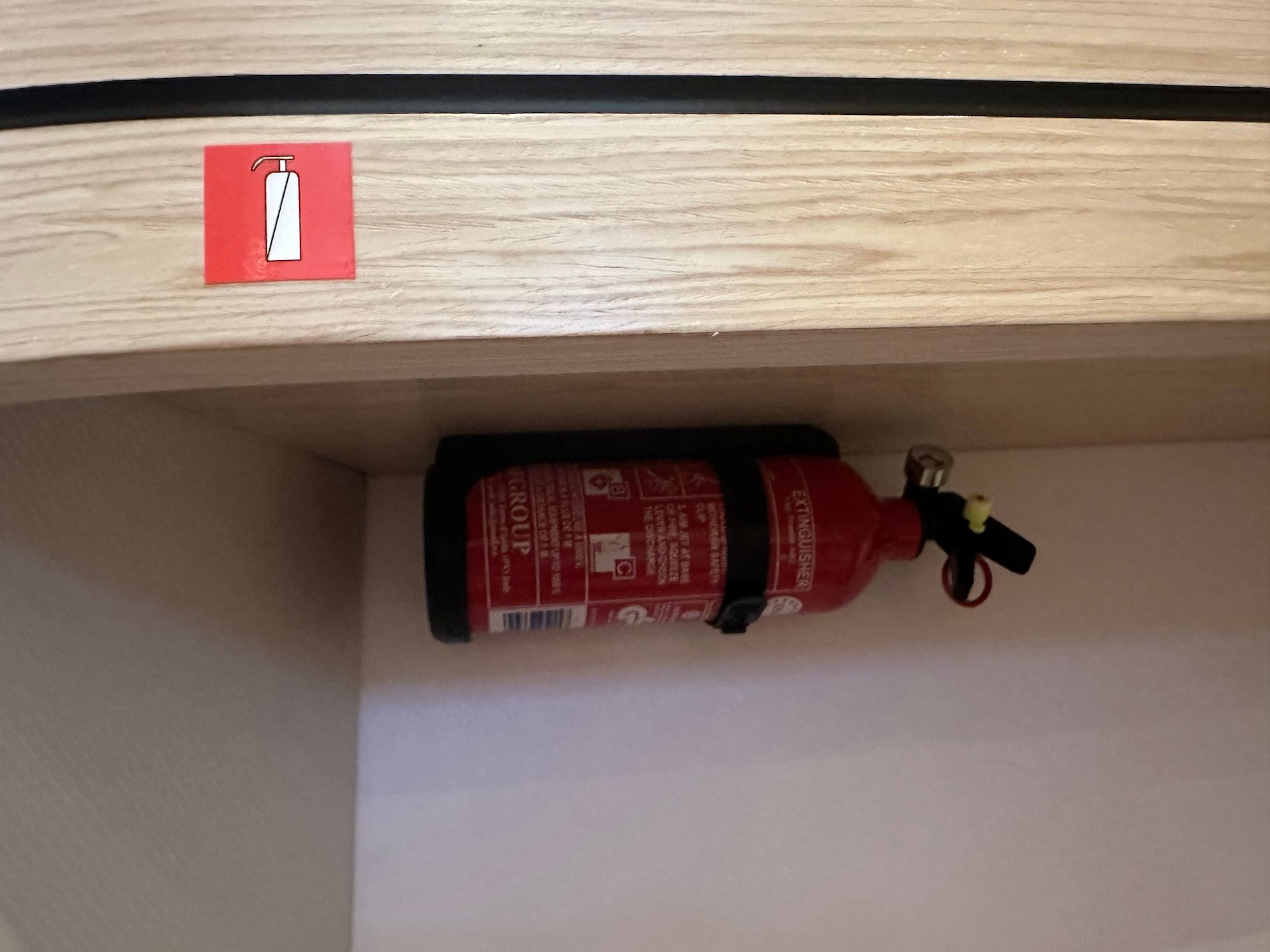Let’s take a moment to talk about a very important topic: safety onboard. While the thrill seekers might need to feel cold and wet to get that sailor’s high 🙌, everyone else enjoys a day of smooth sailing. However, these smooth days hide an incredible amount of preparation behind them. Being lucky is closely tied to being prepared. The checks, the fixes, the clear protocols and communication that happen behind the scenes are what make these days possible.
As Seneca put it:
“Luck is what happens when preparation meets opportunity.”
We’ve spoken of checks and fixes in our previous post. Today, we want to discuss safety. Safety briefings are not just routine procedures; they are vital components of responsible seamanship. They serve to familiarize everyone on board with the vessel’s safety equipment, emergency procedures, and potential hazards. By preparing for the unexpected, safety briefings empower sailors to respond effectively in challenging situations.
But more than just executing our safety briefings, we aim to instill a real safety culture onboard Nuvem Mágica.
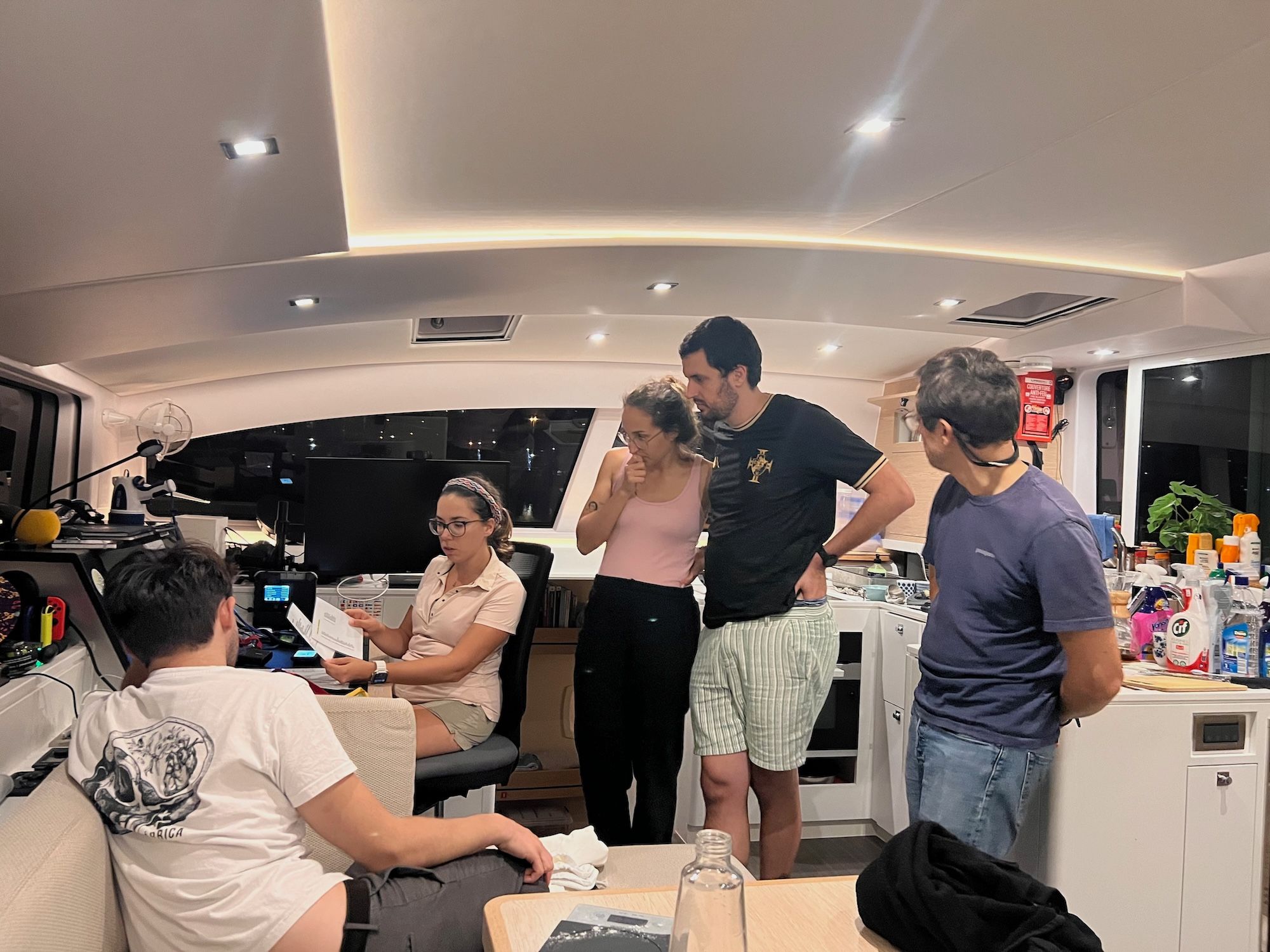
🥽 Safety culture#
Safety culture involves a collective commitment to following safety procedures, maintaining equipment, and communicating effectively to minimize risks and ensure the well-being of everyone on board. A strong safety culture onboard promotes vigilance, preparedness, and teamwork, fostering a safe and enjoyable sailing experience for all.
For us, that sounded like something we wanted. But how do you achieve it?
Before the passage#
- We created a chat group with the whole crew and listed some important safety topics months before the passage. We encouraged specific pre-reading and sent them resources that we found useful. For instance, we sent our crew the Quarterdeck podcast crew overboard prevention and recovery episodes, and linked to resources such as the RYA Sea Survival Handbook.
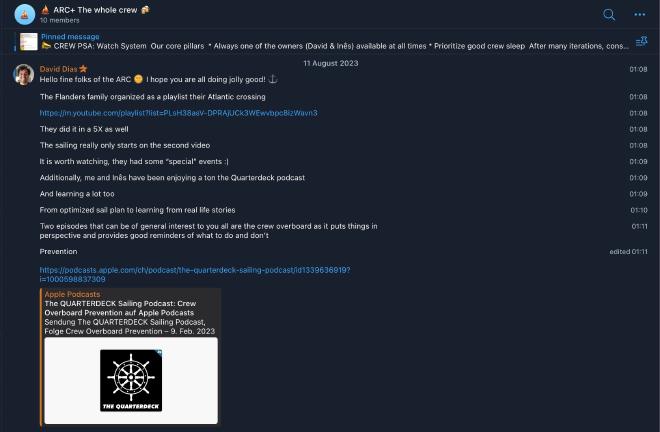
- We sent them our very own Nuvem Mágica Playbook, where we explain our philosophy onboard, some points on living together and basic information on the several systems onboard Nuvem Mágica.
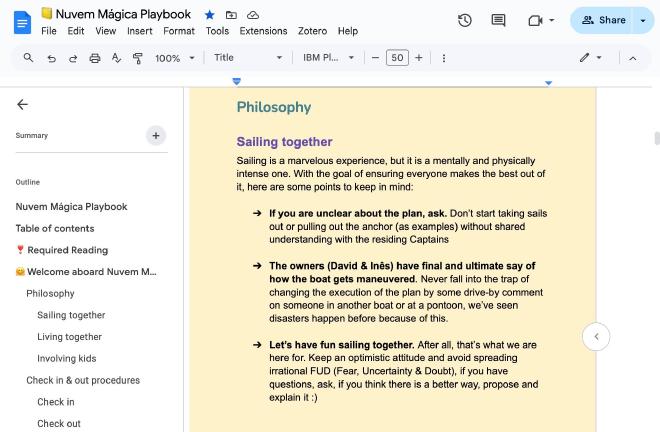
- In general, we also encourage folks to undertake training, either to build up or to complement their skill sets.
- Finally, we prepare our safety briefings quite thoroughly (more on this in the next section).
During the passage#
Uphold what you preach and course correct if needed. We were fortunate that our crew had no qualms in speaking up ❤️
After the passage#
Debrief. While we did do this somewhat informally, one could consider sitting down and exchanging impressions and feedback on this topic specifically.
🌤️ The Nuvem Mágica mindset#
We mostly sail just the two of us, and onboard we have two golden rules:
- Good enough is never enough
- If one of us thinks something needs fixing, we fix it.
Both rules are tied in hands, but what they translate to is that, for instance:
- We always finish what we start. For example, we don’t leave the standup paddle board leash dangling around. We know it will get caught (it already has 😬);
- We try to always do things correctly, that is, use a life jacket, being tethered, using a helmet when going up the mast… etc.
- If one of us thinks we should replace a part with a spare, we do it. We now know many stories where the famous last words were: “That should hold just fine…”
💌 Safety briefings#
Context#
When conducting a safety briefing, you need to keep in mind two things: (1) who are you talking to and (2) what is the context? Are we going out for a day sail or an ocean crossing? Does it make sense to have a 2-hour brief when we have 5 hours to sail? If not, how do you reconcile that and what do you want people to know?
As Nikki Henderson puts it, as crew, you need to: (1) look after yourself, (2) look after the team and (3) look after the boat. If you are inexperienced and crewing on a day sail, your most important job is to look after yourself (and therefore not become a liability). On an ocean passage, the crew’s skillset needs to cover points 2 and 3.
Discussion > Monologue#
People will remember things better if they figure it out for themselves, are able to introduce their own thoughts and experience, and ask questions. We believe it is therefore important to make space for this. Plan more time if needed. And don’t just recite protocols. Go through scenarios: ask questions, wait for the answers, and pick up the threads. We were fortunate to have very experienced sailors for our Atlantic crossing onboard and learned a lot from our joint discussions ❤️
Make it bite size#
People have difficulty retaining a lot of information, and that’s normal. Know what you want people to retain. This involves having the take-away messages very clear in your head, and means more preparation than it seems. To make things easier to digest, ideally break up the safety briefing into multiple chunks over several days.
What should one cover?#
We have a checklist (you might notice a pattern by now 🤓) so we don’t forget anything. We cover:
- Prevention: Fire, flood, crew overboard and physical injury;
- Equipment: often already covered when speaking of prevention;
- Communications: including how to use the VHF and emit a Mayday, Pan Pan and other urgency calls;
- Passage Plan and weather forecast;
- Roles: who is the skipper? How is the backup skipper? 1st mate? The medic? The backup medic?
- Mindset: we tie this back to safety culture and the philosophy we outline in the Nuvem Mágica Playbook;
- Drills: practise, practise, practise.
Show and tell#
Working with visual media#
People learn differently. To support visual learning and also serve as references for quick access, we have laminated cards on Nuvem Mágica with, for instance:
- The text for a MAYDAY call (including the MMSI and callsign already filled in);
- The phonetic alphabet;
- A map with the location of all the safety equipment;
- Reefing tables (taped to the nav station).
This however means having the algorithms (the plan for each scenario) ready beforehand.

Opening the black boxes#
Don’t hesitate to get folks on their feet, walk around the boat and show where things are. Open things up and make people understand that these are not black boxes. Lifejackets are a prime example of this: initially daunting pieces of equipment, once you open them up, the way they work is immediately clear to you.
This might seem like a lot of work, but you should view it more as an opportunity for you to check that the equipment is in order one last time.
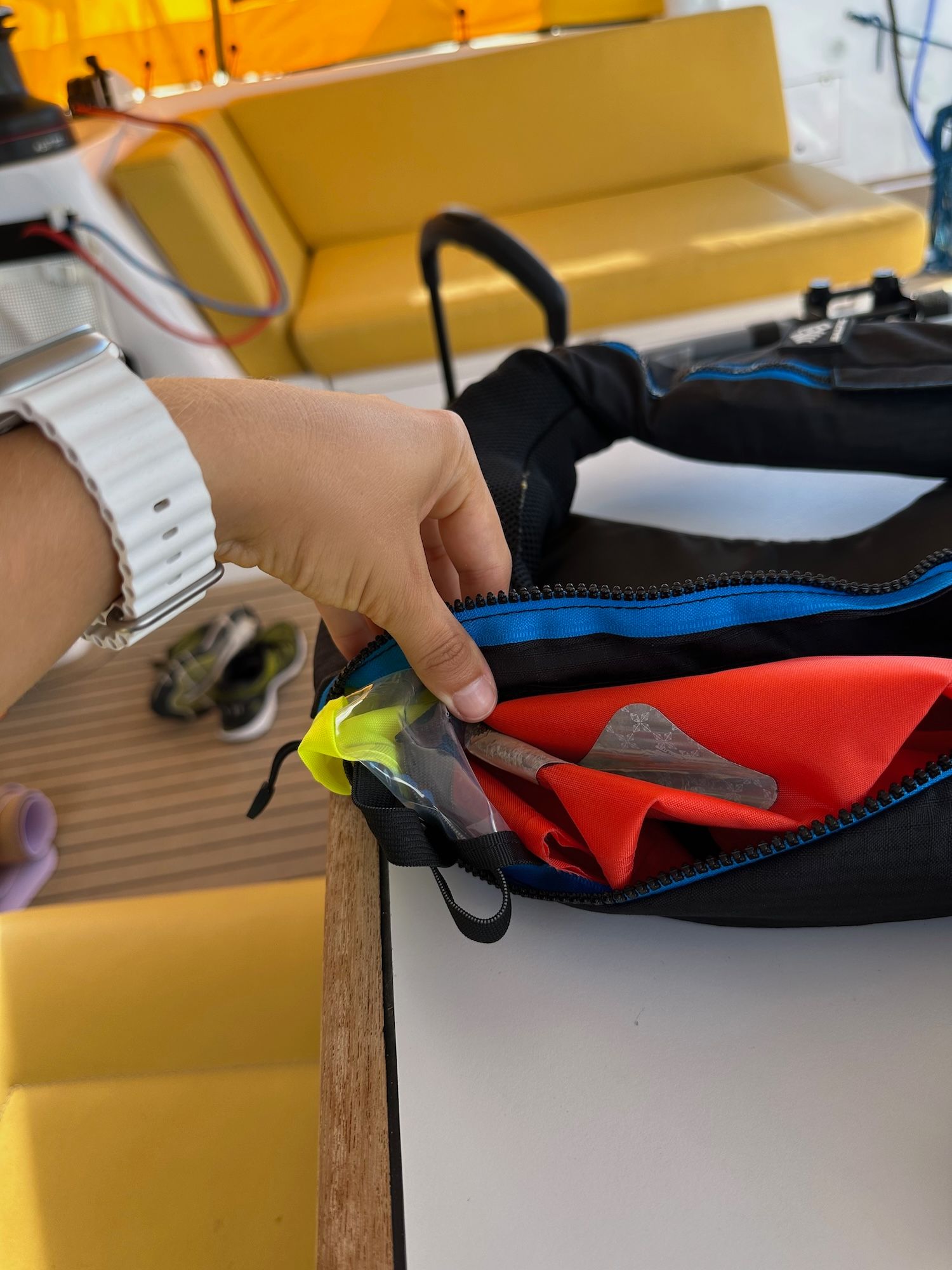
Drills#
You should do drills with your crew. Some of the scenarios to drill include:
- “What if you find water in the bilges?”
- “What if there is a fire?”
- “What if a person is knocked unconscious or someone has fallen overboard?”
You can practise the whole scenario or break it up into chunks and practise specific skills, like stopping the boat as quickly as possible.
💂 Guardians of Nuvem Mágica#
Finally, when we are out at sea, we let a specific group of people (who we lovingly call our “Guardians”) know what we are doing and where we are at all times. We also defined several check-in protocols and what to do in case we do not respond or are in danger. But more on communications in a later post 😉
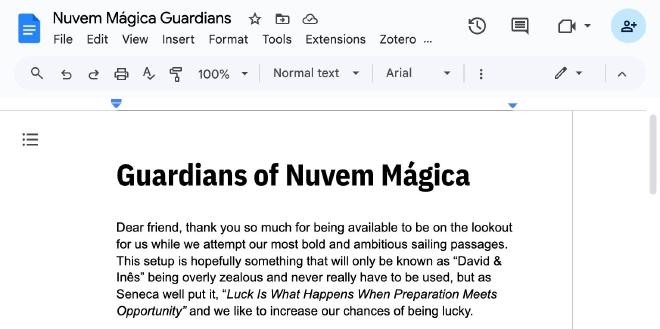
🔚 In short…#
We hope this post proves useful. This is a topic we continue to think about a lot and will always appreciate your ideas. Tag us 🏷️ or write to us ✉️ if you would like to share your thoughts 💭.
Until then, safe travels! 👷
📚 Resources#
- Nuvem Mágica Safety Brief Checklist
- Safety Briefings, the Quarterdeck podcast
- Crew overboard prevention, the Quarterdeck podcast
- Crew overboard recovery, the Quarterdeck podcast
- Quarterdeck Seamanship Scenarios (needs subscription)
- RYA Sea Survival Handbook
- ARC Rally Handbook
- Risk management and sailing, an example with Ryan, Sophie and Andy

